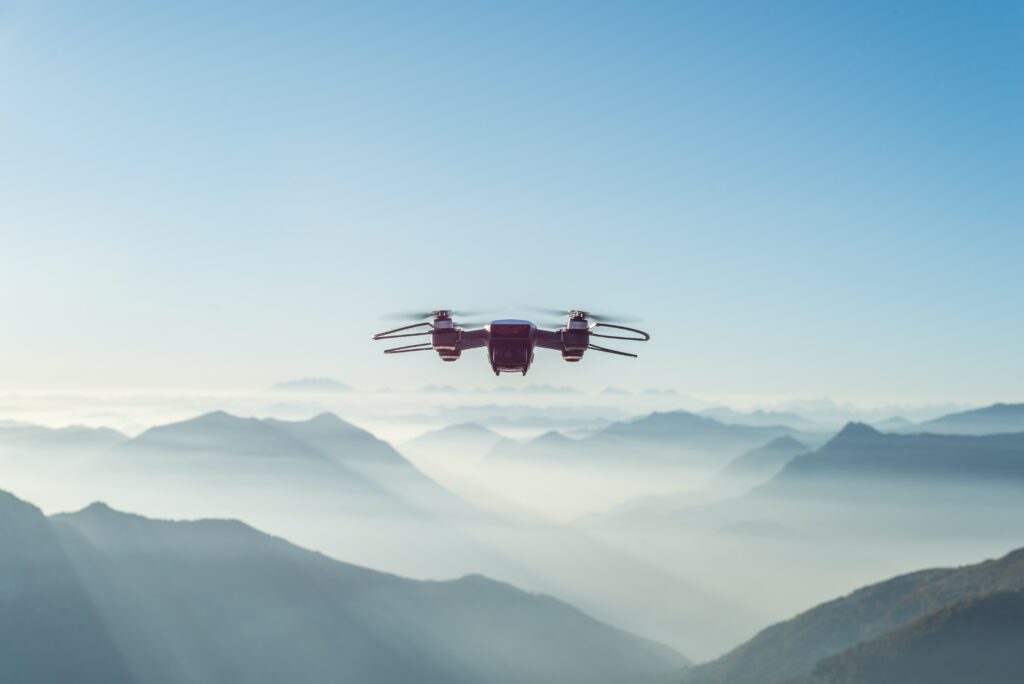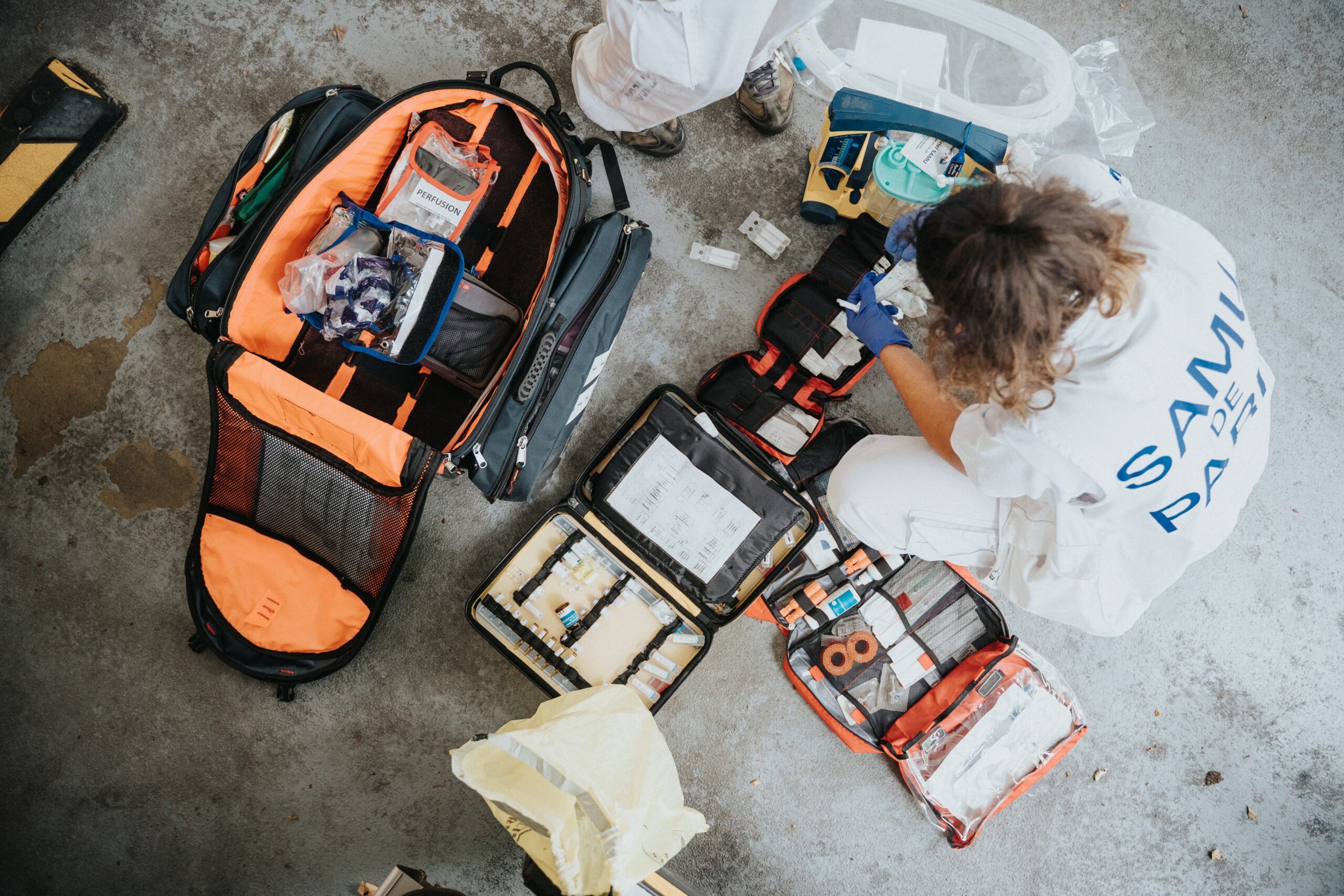Mar 29 - 8min readHow Cutting-edge Tech Can Impact and Transform Humanitarian AidBy Launchbase
The world is full of people who need help, and with the recent crisis in the Ukraine there are those on the front lines, doing all they can to make the world a better place for them. Now, emerging technology is starting to shift the way we think about humanitarian aid—making it possible for us to reach more people than ever before.
In the wake of war, climate change, and natural disasters, tens of millions of people worldwide have grievously been forced to flee their homes in search of safety.
In fact, housing, food, and medical assistance are among the most in-demand commodities on the planet. However, providing these resources through traditional means isn’t always viable during disaster situations due to barriers like limited resources and lack of infrastructure. Fortunately, innovative solutions are beginning to provide answers to some of the world’s most pressing problems.
A number of emerging technologies are already having a significant impact on the delivery of humanitarian assistance. Let’s take a look at seven arising trends that have been transforming the face of humanitarian aid around the world.
1. Web Access and Connectivity
It’s tough to think of a time when the internet wasn’t an essential part of our daily lives. We depend on it for everything from entertainment to education. It is such a central piece of our lives that the United Nations Human Rights Council declared it a fundamental human right in 2016.
The internet has become even more critical for people who have been displaced by conflict or other factors. Refugees and asylum seekers rely on their devices to keep in touch with family members and friends, make plans for their future, and access information that may be critical to their survival. However, many refugees and asylum seekers live in places where internet access is minimal.
With technological advancements like satellite connectivity and low-cost smartphones, humanitarian aid organisations are working hard to improve web access across the globe so that displaced people can take advantage of the technology they need to survive.
2. Digital Identification
It’s easy to overlook the privilege of having a valid ID card or driver’s licence. The ability to securely and swiftly identify a person is something that most of us take for granted. But what about those people who are unable to prove their identities?
In the age of digital information, it seems almost unbelievable that more than 1 billion people around the world still cannot provide proof of who they are. Thanks to advancements in technology and new government institutions, this is about to change.
Imagine if the ability to identify yourself, claim your rights as a citizen, and access government services were suddenly taken away from you. That is the reality for hundreds of millions around the world who have been displaced by emergency situations or natural disasters. Amidst the chaos of an emergency situation, the ability for emergency personnel to quickly identify individuals is paramount.
Now imagine that you’ve just been in a natural disaster and lost everything. You may not even know where your family members are because your home was destroyed. What if you could prove your identity quickly to get financial support from a government agency? What if your children could receive aid right away instead of waiting in long lines? What if you were able to get treatment at a hospital immediately instead of waiting for days to prove who you are?
Digital identification can make all of this possible, and it is already in the works. Digital identification is basically a person’s electronic fingerprint, consisting of their birth records, educational certifications, medical history, and legal status. These are all stored online, never to be misplaced.
3. Distributed Ledger Technology
As tech advancements continue to transform the way we live, they also change the way we give.
One of these technologies is distributed ledger technology (DLT), a collection of synchronised data shared across a number of different places. In contrast to systems that rely on a single centralised administrator or organisation to store all of the data, this technology promotes greater transparency, saves time, and results in a more resilient data-sharing system.
The most well-known example of this is blockchain technology, which keeps track of cryptocurrency exchanges and transactions. However, DLT encompasses more than just blockchain. Donors now have even more opportunities to assist in crisis situations due to DLT. For instance, it is possible to donate cryptocurrencies and purchase charity coins for charitable organisations.
Beneficiaries also do not have to worry about currency conversion rates when exchanging money internationally because cryptocurrencies are universal currencies that you can use anywhere in the world.
4. Data Analytics and Information Management Software
Since humanitarian aid takes place in some of the most remote and unstable regions across the globe, collecting and processing valuable data is scarcely an easy task for those working in the field.
Fortunately, technological advancements in the world of data acquisition and analytics are revising the realm of humanitarian assistance.
Humanitarian organisations today rely on increasingly sophisticated sources of information, as well as software that is capable of processing that information more efficiently than ever before. With these resources, humanitarians can more effectively identify which areas of the world are most in need of aid.
Another vital way data analytics technology makes a difference in humanitarian aid is by streamlining processes. When you think about the high volume of data that needs to be collected and shared between agencies worldwide, it’s not hard to see where this technology could help with efficiency.
For example, digital dashboards, which are constantly updated with real-time information from linked databases, can assist in identifying safe delivery routes for humanitarian aid in conflict zones, or in identifying better storage locations for warehouse goods.
By standardising systems, humanitarian organisations can cut down on administrative time, decrease human error, and quickly share information with other groups working in similar areas, focusing on providing relief services and helping those in need.
5. AI-powered Machine Learning
In addition to practical, data-analysing technology and improved information management systems, technologists have a growing interest in utilising artificial intelligence and machine learning for humanitarian aid.
AI and machine learning tools are being used to process vast volumes of information quickly, with high levels of accuracy. AI has already been employed in areas such as public health and disaster response, as well as to improve the efficiency of aid programs in general.
The World Health Organisation (WHO) uses AI to detect disease outbreaks and predict their spread. Likewise, the United Nations Office for the Coordination of Humanitarian Affairs (OCHA) has partnered with various tech companies, including Google and Microsoft, to use artificial intelligence for disaster response in areas like earthquake-prone Chile.
The UN’s refugee agency has also partnered with tech companies to provide artificial intelligence-based services for refugees, including job matching and language translation.
6. Virtual Reality
You’ve probably heard of virtual reality. You know, the technology that puts you right in the middle of your favourite video games? But did you know that VR tech is also being utilised for humanitarian aid?
Virtual reality is helping traumatised children around the world. Children who grow up in areas ravaged by war and violent conflict often suffer from mental health disorders, post-traumatic stress disorder (PTSD), anxiety, and chronic stress.
Experimental programs are currently underway to assist young people who have experienced trauma by creating a digital safe space that uses virtual reality to create a calming environment. This immersive technology has the potential to reach a more significant number of people for a lower cost and help restore the possibility of a normal childhood.
VR technology can also assist emergency personnel in their work on the ground. Training simulations are being developed so that first responders can practice complex operations such as extractions of the wounded from rubble or hard to reach places. This type of training reduces response time during actual emergencies, which could make all the difference in saving a life.
7. Drone-related Applications
In the aftermath of natural disasters, many people are left without homes and other essential supplies. In addition to the need for shelter, people also have to contend with food shortages, as well as a scarcity of clean water and electricity.
While humanitarian aid is often sent to those in need, there are times when infrastructure is so compromised that aid workers struggle to reach those who need it most.
Aerial robotics, which includes unmanned aerial vehicles (UAVs), aka drones, can be an invaluable tool in these circumstances; they allow for real-time surveillance and disaster mapping.
These drones enable faster delivery of medical supplies, food rations, and other necessities. Drones can also be equipped with cameras and sensors that provide concurrent information about disaster zones. Aid organisations can use this data to determine areas where more resources are needed—with less risk than human workers would face if they were to deliver them directly on foot or by vehicle.
Drones can also assist search and rescue efforts after natural disasters like hurricanes, typhoons, floods, or earthquakes when roads are blocked by debris from destroyed buildings or landslides.

Bonus! Advanced 3D Printing
3D printing is an incredible innovation and represents an opportunity for the humanitarian sector to deliver much-needed equipment to vulnerable communities.
The process involves taking a digital file and using it to create a physical object through additive manufacturing. This means that rather than using machinery to cut away pieces of material until you have your desired shape, 3D printing layers material one at a time until you have your finished object.
But how exactly can this piece of technology improve access to essential medical equipment?
Until recently, the technology to make these printers was prohibitively expensive, and it was never used in any meaningful way by most nonprofits or humanitarian organisations. But now that the technology has become more affordable, it offers a chance for the humanitarian sector to provide crucial supplies to disaster-stricken areas.
For example, refugee camps across Europe and the Middle East already use 3D printing in training workshops, where volunteers are taught to print specific components for wheelchairs, walkers, and workstations.
In the near future, all hospitals and humanitarian facilities will integrate advanced 3D printing technology, which will allow trained personnel to create more intricate items such as prosthetics and assistive tools and parts for people with disabilities.
The Big Picture
Now more than ever, we see advanced technologies playing a central, multifaceted role in humanitarian assistance and development.
We can look forward to seeing the increased use of technologies like satellite imaging and crowdsourcing tools and an overall upsurge in the sophistication of Big Data analytics.
And as social media continues to take the lead in raising awareness and funds for humanitarian assistance, the importance of internet technologies in disaster response will also continue to grow.
The high-tech tools and resources available today, both those explicitly created for humanitarian aid and technology in general, can assist us in taking the correct steps toward reaching our objective of providing livable circumstances to everyone on the planet. In today’s globalised society, technology only expands the magnitude of what we’re capable of. Let’s use it wisely to better everyone’s quality of life.
Ukraine Relief Efforts—Launchbase to Help One Another
With the crisis currently happening in Ukraine, many people are coming together to send over supplies and aid to those suffering from lack of medical attention, famine, and displacement.
As of now, the amount of support has been tremendous and very encouraging. Activists have been urging IT businesses and citizens to chip in and help in any manner they can.
As the Ukrainian conflict continues to unfold, let’s all hope that the fighting will soon cease and that we can provide relief to those suffering—whether directly or indirectly through the use of technology.
It All Starts with a Great Idea
At Launchbase, we’re not just a team of app developers and designers who build groundbreaking apps—we’re also compassionate problem solvers, strategists, and collaborators.
We believe success is gauged not only by the quality of the product but also by its positive impact on the lives of the people using it. We call this “changing lives”. Whether you’re a small business or a public corporation, we want to help bring great ideas to life.
Since our inception in 2013, we’ve helped enterprises of all kinds improve their digital processes and create custom digital solutions that are both innovative and beneficial.
It all starts with a great idea and a genuine desire to help improve our world.




